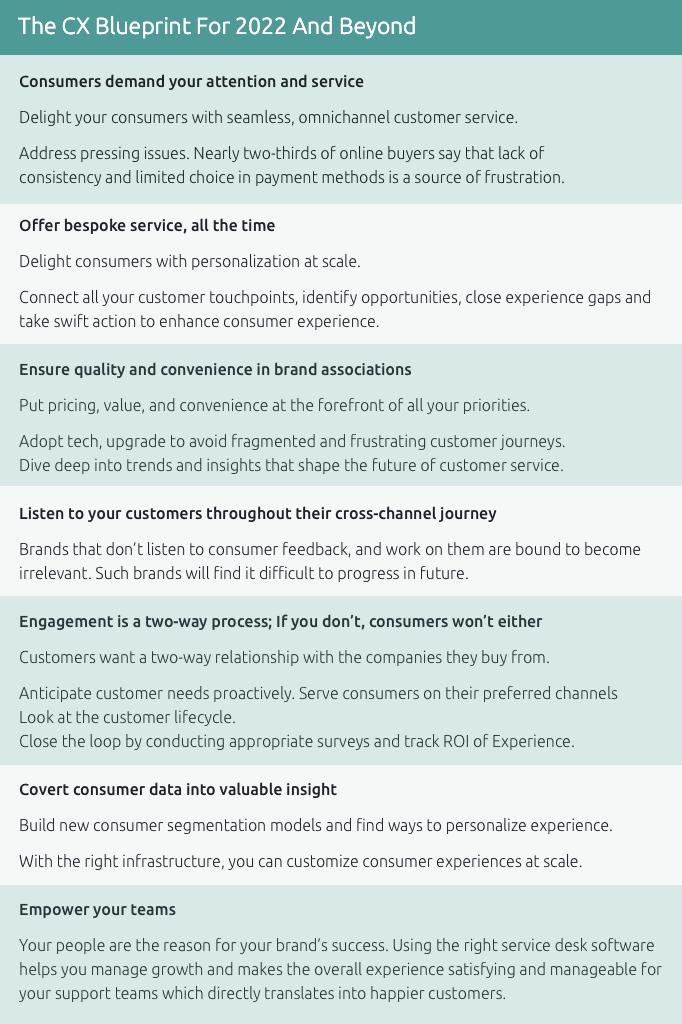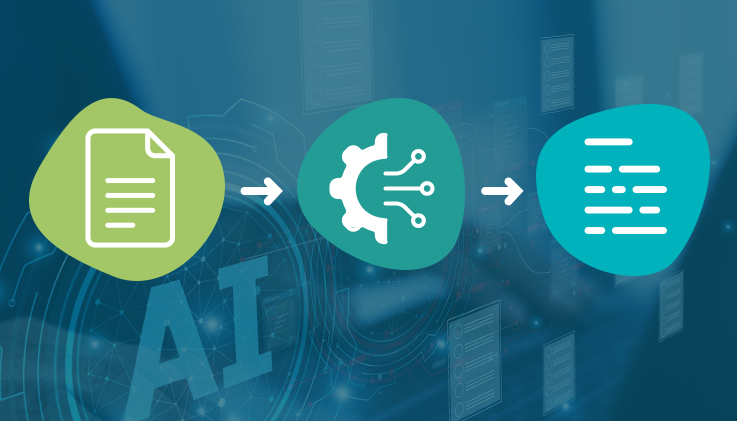The origin of customer experience (CX) as a differentiator can be traced to Japan during the 1950s. Before that, businesses and industries focused on meeting production targets and restricted themselves to fulfilling people's basic demands.
Manufacturers overlooked quality for quantity and earned handsome profits at the consumers’ expense. It is noteworthy that brands back then were synonymous with the quality of goods. That means when product quality deteriorated or customer support and product maintenance were below par, brand loyalty, too, went down.
By the 1980s, businesses sought to determine how customers set their expectations from manufacturers. The results were not surprising. Consumers were unwilling to spend money on businesses that did not listen to them and failed to meet their expectations. If a company did not give them what they needed, it cost customers nothing to switch over to someone who did.
Decades later, the findings still hold true for modern marketers and service providers.
Tectonic shift in customer service (CS) landscape
The COVID-19 pandemic and subsequent tidal wave of digitization in 2020 permanently altered people's purchasing behavior. As brick-and-mortar stores teetered towards irrelevance, digital became synonymous with survival. Leaders huddled to rethink marketing strategies and redraw business plans centered around these new-age customers and safeguarded their benefits over commercial gains.
Ready, steady, pivot!
2021 was the year of the grand pivot for business leaders worldwide, from revenue-driven to customer-centric. Brands embraced change and committed to recreating the same levels of personalization and interactiveness that customers were accustomed to in physical stores before the pandemic struck.
Few businesses took the first step to connect with customers seamlessly across channels. They were intuitive to buyers’ needs and transformed CS through personalization and engagement strategies.
Shunning age-old assumptions aside, marketers worldwide realized the competitive advantage of offering a great customer experience and the value proposition that comes with it. To become customer-centric, you should have a finger on the consumer's pulse and be able to think like them. Customer experience (CX) was and will continue to be the key criteria consumers use to select a product or service, over and above pricing and features.
Also read: Simplify Customer Case Management With ThinkOwl's AI Wizard
It is important to keep tabs on your customer's experience
Understanding your customers’ experience is vital to adjust and refine your offer and ensure it is a compelling one so that you gain a competitive edge. With smarter consumers comes a higher demand for truly exceptional experiences. However, providing excellent CX is not the end goal. For 2022 and beyond, there is a lot more that needs to be done.
Today, consumers demand a friction-free omnichannel purchasing experience and lean toward brands with an impeccable record of product and service delivery. Your customers want to know how you can help them—answer a question, solve a problem, fulfill a requirement, or make things easier—and ultimately want you to keep that promise.
In the experience economy, personalization is crucial when delivering great customer experiences, but you need to ensure it works. Improving customer engagement is a great way to ensure your CX strategy succeeds.
Customer engagement (CE) is one of several important milestones companies encounter on their journey to offering the best customer experience. The formula is simple: without engagement in your marketing and support strategies, all plans of exceptional CX are doomed.
Here is a simplified explanation of both terms:
Customer Experience (CX): CX is consumers’ perception of an organization based on their interactions and engagement across all brand touchpoints, people, and technology during their buying journey. To simplify, customer experience (CX) is how a business engages with its customers at every meeting point throughout their buying journey—from product discovery to marketing and from sales to customer service until retention.
Customer Engagement (CE): An (often ongoing) interaction between an external consumer and an organization through various online or offline channels. It influences the emotional connection between buyers and sellers, as well as impacts overall brand value.
CE and CX are two different terms that convey different meanings. Although measured with different metrics, they have innate similarities. Nevertheless, it is imperative that both CE and CX feature prominently in your marketing and customer support strategies if your business is to succeed.
Also read: Salient Features Of Premium Helpdesk Software
The customer experience renaissance
2022 will present challenges to organizations that are unlike what they have faced before. Attracting customers, engaging and retaining them, and staying ahead of the competition remain fundamental objectives. How you attain these objectives becomes your key differentiator.
Collaboration between businesses and consumers on a solid foundation of technology has ushered in a period of glorious transformation for CS and elevated the value of CX. You are a part of this global renaissance, and together, we can usher in change that will ensure our customers get nothing but the best.
Innovation in CX can be a challenge; however, with the right software—that enables better user and customer relationships, tracks performance, and manages customers throughout their brand journey—not only innovating but also optimizing CX is totally within your reach.

Know what matters to consumers to create a successful CX strategy
Service will remain the top criterion for customers choosing one company over another. Whether it is a one-on-one interaction with an agent in a contact center or a personal interaction with a product demonstrator in-store, a customer's service experience is important. Speed, convenience, knowledgeable help, and friendly service across multiple channels are essential elements that provide a positive brand experience and remain in demand.
Optimize omnichannel messaging and customer support
Customers worldwide want the same thing: a seamless, frictionless digital experience from product discovery and acquisition through purchase to retention. Earlier, omnichannel support was a wow factor, but now it is fast becoming a non-negotiable requirement for customers worldwide.
Customers' preferred communication channels include phone, email, social media, live chat, web, or messaging platforms like WhatsApp. They want you to know their channel preference in advance through brand journey maps and take on the onus of providing a hassle-free omnichannel experience.
The forecast for 2022 and beyond is businesses have to offer stellar CS with a human touch.
Ensure top-notch customer support
Customers will likely spend more on your brand if they are offered quality support. If they experience a positive interaction with your brand touchpoints and support teams, they are more likely to recommend or endorse a brand on social media or through word of mouth. When your teams consistently provide high-quality support (as good as your sales) across multiple channels to your customers, you get rewarded with their loyalty.
Empower your agents
Empower your teams to deliver a matchless service experience. Train them on customer support etiquette, product knowledge, organizational principles, and support policies. They should also know how to seek feedback and measure customer satisfaction. Learn to be accountable for your actions. Accountability can create customer confidence, which can lead to brand loyalty.
Listen to your customers
Understanding your customers is key to long-term growth and success. Listening will help you create effective strategies to win their trust, engage them, and improve their overall experience. Listening to your customers also improves the productivity of your service teams. Most customers feel disillusioned and ignored after sharing their opinions, but they do not see any corrective action from the organization. Dejected, these customers are the first ones to churn.
Practice empathy
Customers like being listened to and appreciate your service teams' efforts if they feel their opinions matter to you. Lending them a patient ear and being empathic puts them in a comfort zone with your service teams. When you humanize support interactions and practice empathy with your customers, it makes them feel special and helps you understand their pain points better.
Practice transparency
A great CX strategy includes doing whatever it takes to build real, meaningful relationships with customers. This means being truthful in your interactions and providing good customer support. Remember, good customer support is the basis for good customer service, and good service is the base for great customer expectations.
For instance, in the face of supply chain issues and labor shortages, businesses are struggling to close information gaps and keep up with the necessary infrastructure and manpower to respond to customer queries about delays in product delivery and various service-related bottlenecks. There is a clear gap between what customers expect and what companies deliver. When expectations are not fulfilled, customers feel cheated and move on. Closing the gap as soon as possible with truthful answers and transparent workflows is always a good idea.
Also read: Why Workflow Automation Is Imperative For Your Business
Automation to the rescue
Rapid digitalization and the proliferation of technology created a new goal for customer service teams. The focus is not on the volume of experiences but on the quality of attention given to customers. Businesses want to provide a wholesome and deep experience to customers and are looking for tech that strengthens engagement and helps with personalization to create individually tailored customer journeys.
Automation helps you meet your business goals. It is extensively used to lower costs, boost performance, or become more productive across industries. Automation reduces human effort, simplifies business processes, makes workflows more efficient and agile, and helps enhance overall customer service.
Smart helpdesk software aids service teams with case management and ticket distribution while intelligently managing workflows. From the outside, though, customers are not privy to any details, and their interactions are limited to agents answering queries, resolving tickets, or troubleshooting technical issues.
Future-proof your martech stacks
In the future, marketers would do well to choose software that helps with business functions and aligns with their CX strategy. The focus has shifted from digital commerce to technologies that provide secure, complete digital experiences.
Social commerce (using social media platforms for business), augmented reality commerce (using 3D mapping to preview the look and feel of a product), livestream shopping (a blend of a live stream and social commerce), and conversational commerce (using messaging platforms for selling) are all in vogue.
Whatever the technology, the execution is fairly simple. To ensure tech complements your business, you must be prepared to handle incoming traffic, create a seamless customer experience, pay attention to detail, and ramp up customer service and support to ensure you deliver a matchless experience your customers will love. Sign up for a 30-day free trial to discover advanced tools by ThinkOwl that ensure awesome CX for your customers.













